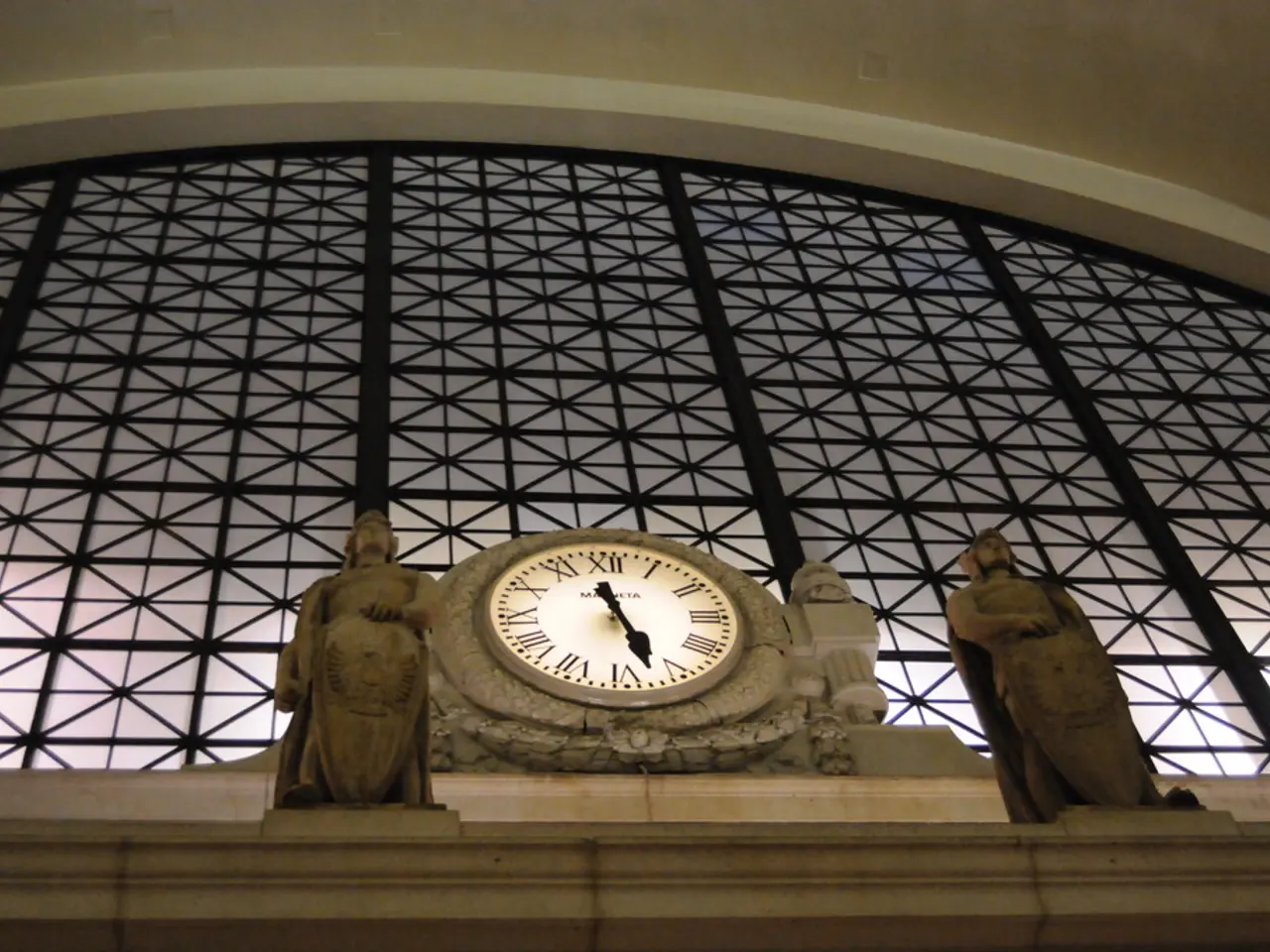Timekeeping Piece: Ingersoll-Waterbury Mantle Clock Featuring Striking Mechanism
Restoring a Rare Ingersoll-Waterbury Clock from the War Years
In the heart of World War II, the clock industry faced unprecedented challenges. Materials like brass and steel were scarce, and manufacturers had to adapt to the new reality. One such company, Ingersoll-Waterbury, responded by producing steel frame and brass electro-plated clocks during the war years (1941-44).
The History of Steel Frame and Brass Electro-plated Ingersoll-Waterbury Clocks
Ingersoll and Waterbury were renowned American clock manufacturers, with histories dating back to the late 19th and early 20th centuries. During the war, the Waterbury Clock Company, known for mass production, came under the influence of the Ingersoll Watch Company. The resulting clocks were a unique blend of traditional craftsmanship and wartime pragmatism.
Manufacturing Process of Steel Frame & Brass Electro-plated Ingersoll-Waterbury Clocks
The manufacturing process for these clocks began with the selection of steel sheets or stamped parts, often recycled or optimized for minimal waste. The steel parts were then stamped/punched into the basic clock frame, substituting for the traditionally used brass.
Next, the steel frames were electroplated with brass to simulate the traditional brass look. The electroplating process included cleaning, surface preparation, immersion in a brass plating electrochemical bath, and rinsing and drying.
The clocks were then assembled, with clock mechanisms, dials, hands, glass covers, and cases installed. The clocks were calibrated for timekeeping accuracy, and underwent final inspection to ensure plating quality, assembly precision, and clock function.
The Current Condition and Restoration Needs
The Ingersoll-Waterbury clock in question was purchased in 2015. Although the case is in good condition, it requires cleaning and polishing. The movement of the clock is dirty and requires a thorough cleaning, disassembly for inspection, and servicing.
Five bushings need to be replaced in the clock. The term "Fully Serviced" can vary between an amateur clock collector and repairer and a professional clock repair shop, but in this case, the clock has never been serviced.
The Significance and Collectibility of Ingersoll-Waterbury War Years Clocks
These clocks serve as historical artifacts, reflecting industrial adaptation during WWII. Collectors value these models for their unique blend of materials, the story they tell about American manufacturing resilience, and the distinct look of brass-plated steel parts versus pre-war solid brass clocks.
Further details can be provided on the electroplating chemistry, tooling used in stamping, or the clock movement specifics from that era. The Ingersoll-Waterbury time and strike mantel clock is a fascinating piece of history, and its restoration will undoubtedly unveil more stories about the company's legacy.
In the process of restoring the Ingersoll-Waterbury clock, vintage clock repair and servicing will be necessary due to its dirty movement and the need to replace five bushings. Despite the advancements in technology and the proliferation of gadgets, the art of clock repair remains relevant in preserving historical pieces like this steel frame and brass electro-plated timepiece.




